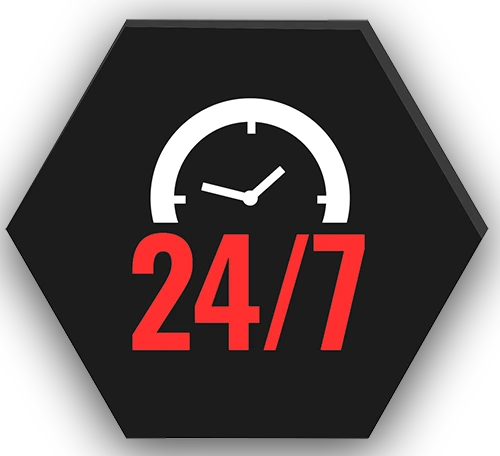Tips & FAQs
With proper operation and maintenance, you will not only receive the highest possible efficiency from your existing air conditioner but will also save money! Almost 65% of your monthly utility costs are comprised of air conditioning and heating use. Also, with the winter season just around the corner, there are simple maintenance measures you can use to check the operation of your furnace before you have to call in a professional. Please read through the following tips to save yourself money and worry.
- At the beginning of the cold season, you should replace your filter and check it monthly thereafter to ensure the efficient operation of the furnace.
- Clean and vacuum around the area where your furnace is and check for obstructions in the vent area of your furnace cover. The vent area of your furnace should be unobstructed.
- Make sure all vents and return air vents are open and clear.
- Check motor operation and belt wear, replace if worn or cracked.
- Check thermostat. Make sure to turn it off and then on again.
- Check circuit breakers connected to the furnace, make sure they have not been “tripped” and are in the on position. Reset if tripped.
- Check the filter in the furnace. Make sure it is clean and correctly installed.
- Make sure all vents and return air vents are open and clear.
- Check the pilot light for your furnace and make sure it is ignited. If not, re-light and check if the furnace works after you’ve lit the pilot light. If the pilot light does not ignite or stay lit, call a professional.
- Check for: Refrigerant Leaks
- Low Freon
- Electrical Control Failure
- Coil Fins
- Refrigerant Charge
- Air Conditioner Coils
- Air Conditioner Filters
Your refrigerant may be low due to heavy usage during hot, summer months. However, it can also mean there is a leak. Adding refrigerant at that time would not be a solution. A trained technician should repair the leak, test the repair, and then charge the system with the correct amount of refrigerant.
When the air conditioner is turned on and off frequently, the compressor and fan controls can wear out. This problem is common for oversized systems. Corrosion of wire and terminals is also a problem in many systems and electrical connections and contacts should be checked during a professional service call.
The aluminum fins on the evaporator and condenser coils are easily bent and can block airflow through the coil. Air conditioning wholesalers sell a tool called a “fin comb” that is available.
The circulating fluid in your air conditioner is a special refrigerant gas added when the system is installed. If the system is overcharged or undercharged with refrigerant, it will not work properly. You will need a service contractor to check the fluid and adjust it appropriately. A service contractor will also be able to determine if the undercharged refrigerant reading is due to a leak.
The air conditioner’s evaporator coil and condenser coil collect dirt over the months and years of service. A clean filter prevents the evaporator coil from soiling quickly. In time, however, the evaporator coil will still collect dirt. This dirt reduces airflow and insulates the coil which reduces its ability to absorb heat. Therefore, your evaporator coil should be checked every year and cleaned as necessary.
Outdoor condenser coils can also become very dirty because the outdoor environment is dusty or if there is foliage nearby. You can easily see the condenser coil and notice if dirt is collecting on its fins.
Filters are located along the return duct’s length commonly in walls, ceilings, furnaces or in the air conditioner itself. Some filters are reusable and others will need to be replaced. There is also a wide variety of types and efficiencies.
Clogged, dirty filters block normal airflow and reduce a system’s efficiency significantly. The compressor and fans are likely to fail prematurely. With normal airflow obstructed, air that bypasses the filter may carry dirt directly into the evaporator coil and impair the coils’ heat-absorbing capacity.
Clean or replace your air conditioning system’s filter or filters every month or two during the cooling season. Filters may need more frequent attention if the air conditioner is in constant use, is subjected to dusty conditions, or if you have pets.
The efficiency, performance, durability and initial cost of an air conditioner depend on matching its size to the following factors:
- How large is your home?
- How many windows does your home have?
- How much shade is on your home, windows, walls, and roofs?
- How much insulation is in your home from the outside?
- How much heat do the occupants/appliances in your home generate?
Due to the range of answers to these questions, a large air conditioner is not always the answer when purchasing one. In fact, a large air conditioner can be more of a burden. It not only is more expensive to purchase but it uses more electricity and creates added demands on electrical generation and delivery systems. Large air conditioners cycle on and off more frequently, reducing their efficiency. This frequent cycling also inhibits moisture removal. In humid climates, removing moisture is essential for acceptable comfort. In addition, this cycling wears out the compressor and electrical parts more rapidly.
Air conditioners are rated by the amount of heat they can remove per hour. This amount is known as British Thermal Units (Btu). Another common rating term is the “ton,” which is 12,000 Btu per hour.
Each air conditioner has an energy-efficiency rating that lists how many Btu per hour are removed for each watt of power it draws. For room air conditioners, this efficiency rating is the Energy Efficiency Ratio or EER. For central air conditioners, it is the Seasonal Energy Efficiency Ratio or SEER. These ratings are posted on an Energy Guide Label, which must be conspicuously attached to all new air conditioners. Many air conditioner manufacturers are participants in the voluntary EnergyStar® labeling program. EnergyStar-labeled appliances mean that they have high EER and SEER ratings.
In general, new air conditioners with higher EERs or SEERs sport higher price tags. However, the higher initial cost of an energy-efficient model will be repaid to you several times during its life span. Your utility company may encourage the purchase of a more efficient air conditioner by rebating some or all of the price difference. Buy the most efficient air conditioner you can afford, especially if you use (or think you will use) an air conditioner frequently and/or if your electricity rates are high.
National minimum standards for central air conditioners require a SEER of 9.7 and 10.0, for single-package and split-systems, respectively. But you do not need to settle for the minimum standard; there is a wide selection of units with SEERs reaching nearly 17.
Before 1979, the SEERs of central air conditioners ranged from 4.5 to 8.0. Replacing a 1970s-era central air conditioner with a SEER of 6 with a new unit having a SEER of 12 will cut your air conditioning costs in half.
In general, new air conditioners with higher EERs or SEERs sport higher price tags. However, the higher initial cost of an energy-efficient model will be repaid to you several times during its life span. Your utility company may encourage the purchase of a more efficient air conditioner by rebating some or all of the price difference. Buy the most efficient air conditioner you can afford, especially if you use (or think you will use) an air conditioner frequently and/or if your electricity rates are high.
National minimum standards for central air conditioners require a SEER of 9.7 and 10.0, for single-package and split-systems, respectively. But you do not need to settle for the minimum standard; there is a wide selection of units with SEERs reaching nearly 17.
Before 1979, the SEERs of central air conditioners ranged from 4.5 to 8.0. Replacing a 1970s-era central air conditioner with a SEER of 6 with a new unit having a SEER of 12 will cut your air conditioning costs in half.
When your air conditioner needs more than the regular maintenance described previously, hire a professional service technician. A well-trained technician will find and fix problems in your air conditioning system. However, not all service technicians are competent. Incompetent service technicians forsake proper diagnosis and perform only minimal stop-gap measures. Insist that the technician:
- Check for the correct amount of refrigerant
- Test for refrigerant leaks using a leak detector
- Capture any refrigerant that must be evacuated from the system, instead of illegally releasing it into the atmosphere
- Check for and seal duct leakage in central systems
- Measure airflow through the evaporator coil
- Verify the correct electric control sequence and make sure that the heating system and cooling system cannot operate simultaneously
- Inspect electric terminals, clean and tighten connections, and apply a non-conductive coating if necessary
- Oil motors and check belts for tightness and wear
- Check the accuracy of the thermostat.
- Replace or clean air conditioner filters.
- Minimize dirt and debris near the condenser unit. Cleaning the area around the coil, removing any debris, and trimming foliage back at least 2 feet (0.6 meters) allow for adequate airflow around the condenser.
- Over most of the cooling season, keep the house closed tightly during the day and ventilate at night either naturally or with fans.
- Use bath and kitchen fans sparingly when the air conditioner is operating.
- Set your thermostat at 78 or higher. Each degree setting below 78 will increase your energy consumption by approximately 8%.
- Keep the drapes or blinds closed on windows that face east, south, west to reduce solar heat gain.
- Consider installing a programmable thermostat. Programming your air conditioners on or off times to your schedule reduces the possibility of leaving it on when you are not at the house.
- Today’s best air conditioners use 30% to 50% less energy to produce the same amount of cooling as air conditioners made in the mid 1970s. Even if your air conditioner is only 10 years old, you may save 20% to 40% of your cooling energy costs by replacing it with a newer, more efficient model.
- Do not insist on an air conditioner that is larger than necessary.
- If replacing an older or failed split system make sure that the evaporator coil is replaced with a new one that exactly matches the condenser coil in the new condensing unit.
- When possible delay heat-generating activities such as dish-washing until the evening on hot days.
- Clean filters every month and the coils and fins once a year. A dirty filter that causes a 10% reduction in airflow can increase operating costs by 11%
- On the outside of your home, use a high-quality caulk to seal around all windows and doors where the frames meet exterior siding or brick. There are probably many other areas of your exterior that may need to be caulked as well. If you have any loose glass panes in a window, use a glazing compound to reseal them.
- Inside your home, use weather stripping and gaskets to seal around the moving parts of windows and doors and around electrical outlets.
- Try not to use a dehumidifier at the same time your air conditioner is operating. The dehumidifier will increase the cooling load and force the air conditioner to work harder.
- For economical operation, turn it on only when your home is occupied.



